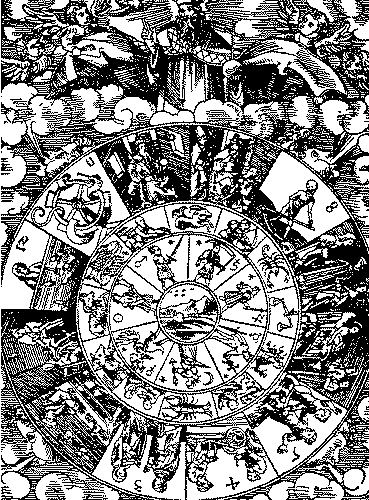Hey!
That's interesting Kwaw, and it makes a solid case for Algol/XIX, although it raises a big question for me...
I wonder about the source of that Hebrew title "Head of the Chief"? Is that astrolabe's titling identical to other medieval astrolabes that depict Behenian fixed stars? Is Algol referred to as "Head of the Chief" anywhere else? I ask, not to be obstreperous, but because we seem to have focussed on that one intrument and I don't know enough about medieval astrolabes to know if those titles are common/standard.
For that matter, how much do Jewish and Arabic astrological tradition overlap before we get to Spain in the 12th century and the strange inclusivity of Alfonso X? Why would we look to Hebrew names (standard or not) to determine meaning and content for the fixed stars when the tradition is (by most accounts) an Arabic one derived from Hellenistic sources?
The impact of Arabic astrology and magick on the Western occult tradition is substantial enough that I don't follow why Hebrew titles should make Algol any less gruesome (which most classical astrologers thought it was). Not to get all "baby with the bathwater," but if Jewish thought about the fixed stars is vital and central to the astrological tradition, then how accessible were those thoughts to an Italian of the early Renaissance? Hebrew is such a kneejerk esoteric fallback with Tarot, is it necessary to graft it on here as well without a specific reason to do so? I guess what I'm saying is, it is interesting when the Hebrew variations in naming support the familiar titles, but I'm not sure if 6 letters on a single instrument are enough to use in speculation.
(the following two quotes cited from
http://members.optusnet.com.au/~gtosiris/page11-26.html)
"The astrolabe, essentially a two-dimensional model of the sky, was originally a Greek invention (dating circa 3rd-century BCE) to enable the problems of spherical astronomy (i.e., the prediction of star positions) to be solved. It moved with the spread of Islam through North Africa into Spain (Andalusia). It would appear that England, due to the scientific activity centred at Oxford, was the conduit for the introduction of the astrolabe from Spain into western Europe in the late 13th-century and the 14th-century. Historians have not settled the debate over who was responsible for the transmission of the astrolabe from Muslim Spain into Europe and when and where the astrolabe first appeared in Europe."
"Linguist Maio Pei made a check of 183 English star-names he concluded that 125 were from Arabic, and 9 were from Arabic-Latin." (See: Story of the English Language by Mario Pei (1967; Page 225).)
and also...
"The star names used in the classical Islamic world were derived from two distinct sources: the names used by pre-Islamic Bedouins, and those transmitted from the Greek world. As Greek astronomy and astrology were accepted and elaborated, primarily through the Arabic translation of Ptolemy's Almagest, the indigenous Bedouin star groupings were overlaid with the Ptolemaic constellations that we recognize today." (Islamicate Celestial Globes by Emilie Savage-Smith (1985) Page 114.)
I can follow the logic of Arabs to merchant traffic into Italian and Southern French port towns as a likely site for the appearance of a star map with exotic images... (Again Daana Mindon makes a really solid case for a map deriving from North Africa.) But, without wanting to rock the boat, I'm not sure how much weight I'd accord that Hebrewlabeling, before I have a sense of the use of the Behenii by astrologers of the period. But I'm happy to be wrong; I just want to follow your logic.
Am I totally off base?
Scion
P.S. I sort of collated y'all's thoughts up to this point as I understand them, and put together a large chart with the Behenian fixed stars arranged in Rosanne's climbing helix order, and alternately the zodiac circle of the year. I thought having the stuff all situated in a few tables might make discussion easier. I'll produce a PDF and attach it shortly.


